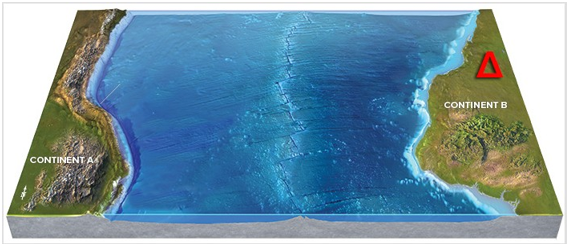Thornthwaite's classification was based on
A) the principle of the water balance.
B) hydrologic characteristics.
C) effective temperatures.
D) latent heat vs. sensible heat.
Answer: A
You might also like to view...
Sustainable use of the earth's water resources involves
A. an integrated approach to managing water resources and preventing water pollution throughout each watershed. B. continued subsidizing of the market price of water so that there is fair distribution of water. C. emphasis on waste management over waste prevention. D. discharge of hazardous wastes into deep wells. E. channel pollution into the oceans instead of lakes and rivers.
Use your knowledge of plate boundaries to answer whether a volcano is likely or unlikely to form at the location of the red triangle.

A) Likely
B) Unlikely
Which of the following lines of evidence would best support the argument that Earth's atmosphere is warming as a result of an increase in solar output but would not be the argument that it is warming because of increased concentrations of greenhouse
gases? A) Earth's temperature stabilizes when the concentration of greenhouse gases in the atmosphere begins to decrease. B) Both the troposphere and stratosphere show warming trends. C) The stratosphere shows a warming trend, but the troposphere shows a cooling trend. D) Warming trends are detected in some regions of the planet but not others.
Earth's velocity of rotation is at its maximum at the ____
a. poles b. Arctic/Antarctic circles c. tropics d. equator e. mid-latitude zone